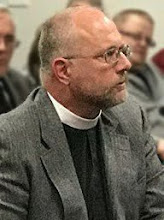The Gospel accounts of Jesus’ crucifixion speak of a three-hour period of darkness while Jesus hung on the cross. St. Luke writes, “It was about the sixth hour (noon), and darkness was over the whole land until the ninth hour (3:00pm), while the sun’s light failed.” (23:44-45).
At first, this sounds like a solar eclipse. But you should notice that several details don’t fit an eclipse. For one, the total eclipse will only last for two and a half minutes. That’s a far cry from the three hours described in the Gospel. Even the partial phase will last for less than the three hours.
Even more telling, eclipses happen because the moon is in the sky during the day-time, and was back-lit by the sun. We call this the “new moon” phase, and it is opposite of the “full moon” phase, when the moon is in the night sky, and is front-lit by the sun. These two phases of the moon occur about 15 days apart. They cannot happen on the same day.
The Bible tells us that Jesus was crucified during the feast of the Passover, which always occurred at the full moon of the Jewish month of Nissan. In other words, it is utterly impossible for an eclipse to occur during the Passover festival because the moon is on the wrong side of the world to block out the sun.
All of this leads us to realize that whatever happened to the sun’s light during Christ’s crucifixion cannot be explained as a solar eclipse. It must have been something else that caused “the sun’s light to fail.”
Outside of the Bible, in 52 AD, a pagan Roman historian also seems to have seen and written about the crucifixion darkness. We don’t have this book anymore (at least we haven’t found it yet). But the later historian, Africanus, apparently had it in hand when he wrote, “Thallus, in the third book of his histories, explains away the darkness [at Jesus’ death] as an eclipse of the sun—unreasonably as it seems to me.”
Even though Thallus didn’t know enough astronomy and history to rule out an eclipse, he couldn’t deny the darkness that his eyes saw. Africanus also quoted a Greek historian, Phlegon, who witnessed the same darkness.
“In the fourth year of the 202nd Olympiad (i.e., AD 33) there was ‘the greatest eclipse of the sun’ and that ‘it became night in the sixth hour of the day [i.e., noon] so that stars even appeared in the heavens. There was a great earthquake in Bithynia, and many things were overturned in Nicaea.’”
Note that Phlegon connects the darkness with a great earthquake. The coincidence of these two events matches the Bible’s account perfectly. “And behold, the curtain of the temple was torn in two, from top to bottom. And the earth shook, and the rocks were split.” (Matthew 27:51).
Notice, too, that Phlegon seems to be writing from Bithynia, which is about a thousand miles north of Jerusalem. No eclipse could explain that. The moon is simply not large enough to cause a swath of total darkness a thousand miles wide.
This raises a question about how large was the area that was darkened on Good Friday. It seems clear that it was more than just Jerusalem and Judea, but also Rome, Athens, and Nicaea. Is it possible that the darkness covered the entire earth? We have not yet found any historical sources saying so, but the possibility is certainly there.
What is, however, certain and beyond all doubt is that Jesus’ suffering and death covers all the earth. His cross is the true light of the world, the source of true illumination to every tribe and tongue and place and time.
Whatever we see by the light of the cross, we see more clearly and more brightly than we can ever see by the light of the sun. “I am the light of the world. He that follows Me shall not walk in darkness, but shall have the light of life” (John 8:12).
Friday, August 18, 2017
Subscribe to:
Post Comments (Atom)


No comments:
Post a Comment